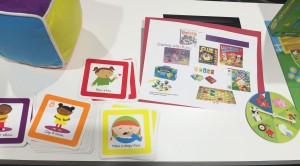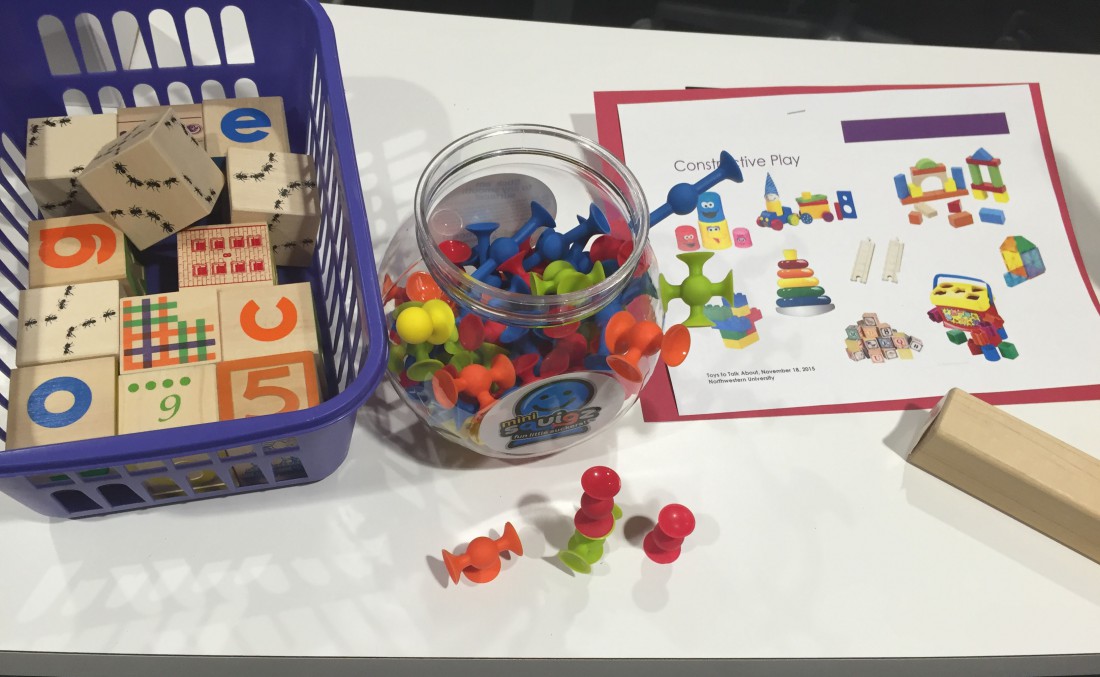By Colette House
It’s hard to know which toy aisle to turn down when so many dolls, robots, and video games stand out. Some beckon louder than others, though, in our quest for toys that foster learning, spark imagination, or inspire creativity.
Take a few tips from Judy Roman of Northwestern University’s Center for Audiology, Speech, Learning, and Language. She suggested “Toys to Talk About” at her presentation Wednesday night and said the best toys are the ones that promote interaction between children and parents or caregivers.

While playing with “noisy toys” is part of child development, audiologists and speech pathologists tell parents to use caution when buying these items. The American Society of Testing and Materials mandates that toys should not produce sounds exceeding 85 decibels at about 20 inches away from the body.
Each year, the Sight & Hearing Association compiles a list of “noisy toys.” In 2014, the Doc McStuffins: Rockin’ Doc Sing-Along Boombox topped the list followed by Laugh & Learn Puppy Piano.
Northwestern University audiologist Jennifer Phelan said children usually don’t interact with toys 19 inches away from their bodies; they usually play with them much closer. She said it’s better for parents to consider a toy’s noise level from 10 inches away. She suggests parents play with the toy themselves and interact with it as their children would. If it’s too loud for the parents, it’s most likely too loud for the children as well.
“If you’re at a store and it (the toy) says ‘push me’ and it’s on a shelf and you push it, that’s a far distance. That’s not where a child is going to play with it. They’re going to hold it close. They’re going to potentially hold it up to their ear. In doing those kind of things, does it sound too loud?” said Phelan.

Play is a fundamental part of child development because it fosters children’s cognitive, speech, and language skills simultaneously. Children’s play abilities develop in stages and it’s important to provide the toys that fit with each phase of play. Babies enter the sensorimotor stage of play at 6 to 9 months of age and Roman says, Toys that delight the senses are perfect for this age group. Babies can associate shaking a toy with the sound it may make at this age. Roman suggests buying toys that please the senses.
Studies show that children ages 12 -24 months can benefit from exposure to lots of words and that toddlers 24-36 months benefit from hearing more sophisticated words. The more parents can interact with and expose their children to these things the better.
“Any time that kids can expand their vocabularies and grow their vocabularies and their ability to tell a story they’re going to gain skills for the rest of their lives,” said Roman. “The other piece is all the critical thinking skills: the perspective taking, comparing and contrasting, figuring out how to create a different ending, how to work through emotions. The critical thinking skills will serve them through the rest of their lives.”

Phelan said that playing with a noisy toy occasionally won’t harm hearing, but parents need to consider how much time their children could potentially engage with it. Repeat exposure to “noisy toys” has the potential to cause hearing loss and is something parents should keep in mind when purchasing toys.
“What if that toy becomes a favorite and they are always holding it up to their ear or they are always sleeping with it? That’s when, essentially, they are starting their cumulative noise exposure a whole lot earlier,” said Phelan.
Phelan said she never wants to be an alarmist and flag toys as too loud and that it’s okay if a noisy toy becomes a favorite toy.
“We just need to be a little smart about the way we play with it,” said Phelan.
Both Phelan and Roman remind parents that toys are supposed to be fun. It’s important to keep noise levels and childhood development in mind, but ultimately the best toys are the ones that children love the most.


